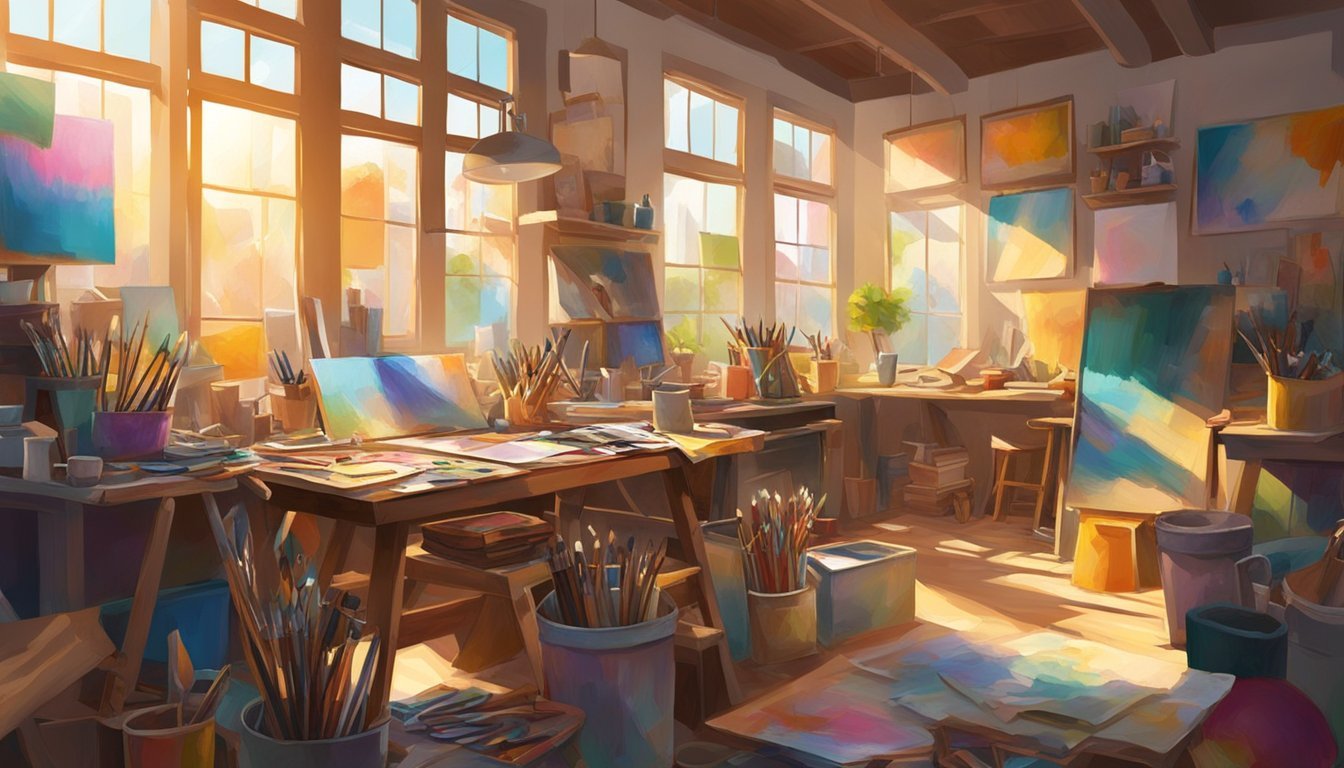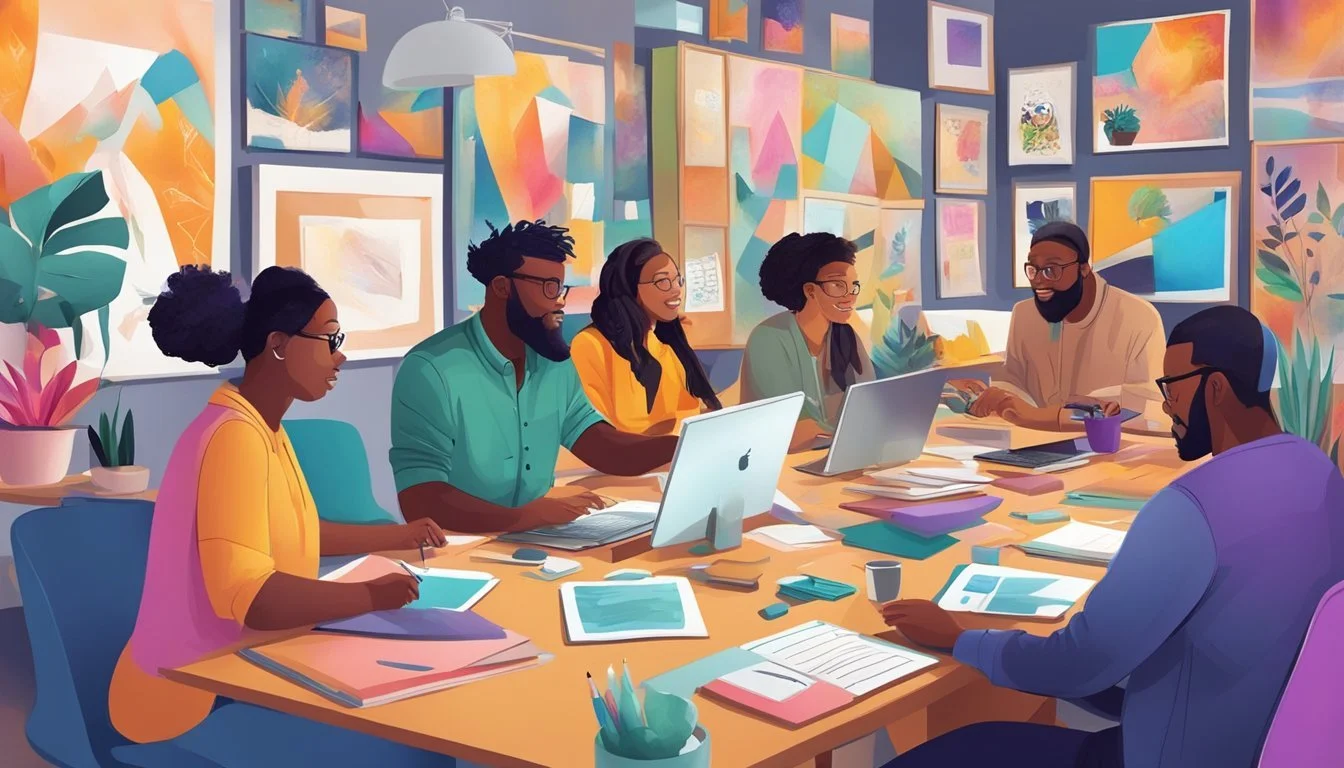Exploring Artistic Personality Types: Unleashing Creativity and Expression
Artistic personality types encompass individuals who possess a unique blend of traits that fuel their creative expression. These personalities are characterized by their independent thinking, strong intuition, and original approaches to problem-solving. Artistic types value self-expression and often use their imagination to convey ideas and emotions through various mediums.
People with artistic personalities tend to be expressive and draw inspiration from the world around them. They often seek out new experiences and perspectives to fuel their creativity. Artistic types may excel in fields such as visual arts, music, writing, or performing arts, but their creative mindset can also be valuable in other industries that value innovative thinking.
While artistic personalities share common traits, they can manifest in different ways. Some may be more introverted and prefer solitary creative pursuits, while others thrive in collaborative environments. Regardless of their specific style, artistic types generally prioritize authenticity and originality in their work and personal lives.
Understanding Artistic Personality Types
Artistic personalities are characterized by their unique blend of creativity, sensitivity, and expressiveness. These individuals possess a distinct set of traits that shape their approach to life and work.
Key Traits of Artistic Personalities
Artistic personalities are often highly expressive and driven by a deep need to create. They value originality and tend to be independent thinkers. These individuals are typically sensitive to their surroundings and possess a keen eye for aesthetic details.
Creators with artistic personalities often seek meaning in their work and life experiences. They may exhibit perfectionist tendencies, striving to bring their visions to life with precision and care. Flexibility is another common trait, allowing them to adapt their ideas and methods as needed.
Personal values play a significant role in shaping the artistic personality. Many artists are guided by their inner convictions and use their work as a means of self-expression and exploration.
The Role of Intuition and Imagination
Intuition and imagination are central to the artistic personality. These individuals often rely on their artistic intuition to guide their creative process, trusting their instincts and inner voice.
Imaginative thinking allows artists to envision new possibilities and push the boundaries of their chosen medium. They may see connections and patterns that others overlook, leading to innovative ideas and fresh perspectives.
Artists frequently draw inspiration from their surroundings, emotions, and personal experiences. This ability to tap into their inner world and translate it into tangible creations is a hallmark of the artistic personality.
Creative problem-solving is another strength of artistic types. They often approach challenges from unconventional angles, using their imagination to find unique solutions.
Diverse Artistic Disciplines
Artistic personalities can be found across a wide range of creative disciplines. Visual arts, such as painting, sculpture, and photography, are common outlets for artistic expression.
Music is another realm where artistic personalities thrive. Composers, musicians, and songwriters use their creativity to craft melodies and harmonies that resonate with listeners.
Dance and drama provide opportunities for artists to express themselves through movement and performance. These disciplines allow for physical and emotional expression, often telling stories without words.
Crafts and design fields attract artistic personalities who enjoy working with their hands and creating functional yet beautiful objects. Creative writing is another avenue for artistic expression, with authors and poets using words to paint vivid mental pictures.
Types of Artistic Personalities
Artistic personalities encompass a range of traits and tendencies that influence creative expression. These can be categorized using established personality frameworks to provide insights into artistic inclinations and strengths.
Myers-Briggs and Artistic Types
The Myers-Briggs Type Indicator identifies several personality types associated with artistic tendencies. INFPs are often drawn to creative pursuits, valuing originality and personal expression. They thrive in environments that allow for imagination and emotional depth.
ENFPs share similar creative leanings but tend to be more outgoing. Their enthusiasm and ability to connect ideas make them natural innovators in artistic fields.
INFJs combine creativity with a desire for meaning. They often excel in visual arts or writing that explores complex themes.
ENTPs bring a logical approach to creativity. Their quick wit and love of intellectual challenges can lead to unique artistic solutions.
Holland Codes and Creativity
The Holland Codes, developed by psychologist John L. Holland, include an "Artistic" type as one of six personality categories. This type values self-expression, creativity, and originality.
Artistic types often prefer unstructured work environments. They enjoy creative activities such as writing, visual arts, or music.
These individuals typically score high in traits like imagination and openness to experience. They may struggle with conventional tasks but excel in roles that allow for creative problem-solving.
Holland's framework suggests that artistic personalities are most fulfilled in careers that align with their creative strengths. This can include fields like graphic design, fine arts, or creative writing.
Artistic Personalities in the Professional World
Artistic individuals thrive in careers that allow for creativity, self-expression, and innovation. They often seek meaningful work that aligns with their values and provides opportunities for personal growth.
Ideal Work Environments
Artistic personalities flourish in settings that encourage creative thinking and unstructured activities. They prefer flexible schedules and spaces that inspire imagination.
Open office layouts with collaborative areas can stimulate artistic minds. Natural light, vibrant colors, and access to nature often boost their productivity.
Many artistic individuals work well independently, valuing autonomy in their projects. They may struggle with rigid hierarchies or excessive rules that stifle their creativity.
Remote work options can be appealing, allowing artists to design their own inspiring workspaces. Startups and creative agencies often provide the dynamic atmosphere these personalities crave.
Artistic Careers and Occupations
Artistic types excel in various professions that harness their inventive spirits. Writers, photographers, and architects channel their creativity into tangible forms.
Journalists and editors combine artistic flair with analytical skills. Interior designers and landscape architects transform spaces, blending aesthetics with functionality.
Artistic Occupations Graphic Designer Music Composer Fashion Designer Art Director Animator
Many artistic individuals find success as freelancers or entrepreneurs, creating their own businesses around their talents. This path allows them to fully express their vision and maintain creative control.
Artistic personalities often seek roles as artisans, crafting unique products or experiences. They may also thrive in fields like advertising, where innovative thinking is highly valued.
Psychological Aspects of Artistic Personality
Artistic personalities exhibit distinct psychological traits that shape their creative expression and approach to art. These characteristics influence how artists perceive and interact with the world around them.
Emotional Sensitivity and Creativity
Artists often display heightened emotional sensitivity. This trait allows them to perceive subtle nuances in their environment and translate them into powerful creative works. Many artists report feeling emotions more intensely than others.
Increased sensitivity can fuel artistic abilities by providing rich inner experiences to draw from. It may also lead to greater empathy, allowing artists to connect deeply with their subjects and audience.
However, emotional sensitivity can also make artists more vulnerable to stress and mood fluctuations. Some studies suggest higher rates of anxiety and depression among creative individuals. Developing healthy coping mechanisms is crucial for artists to manage these challenges.
Perfectionism and the Artistic Mindset
Perfectionism frequently accompanies artistic personalities. Many artists set exceptionally high standards for their work and constantly strive for improvement. This drive can lead to remarkable achievements and breakthroughs in artistic expression.
Artists may spend hours refining details that others might overlook. They often engage in extensive planning and preparation before beginning a project. This meticulous approach can result in highly polished final products.
However, perfectionism can also hinder creativity if taken to extremes. Artists may struggle with self-doubt or fear of failure. Some may abandon projects if they feel unable to meet their own lofty expectations. Learning to balance perfectionism with self-compassion is essential for artistic growth and productivity.
Developing Artistic Talent
Nurturing artistic talent involves a combination of personal growth and formal education. Artists can enhance their skills through self-reflection, structured learning, and guidance from experienced mentors.
Encouraging Personal Growth
Artistic growth starts with embracing one's creative potential. Artists should engage in regular creative activities to stimulate their imagination. Keeping a sketchbook or journal can capture fleeting ideas and inspirations. Experimenting with different mediums and techniques expands artistic horizons.
Setting aside dedicated time for artistic pursuits is crucial. Creating a workspace that fosters creativity can significantly impact productivity. Artists benefit from exposing themselves to diverse experiences and cultures, which can spark new ideas and perspectives.
Developing a habit of self-reflection allows artists to track their progress and identify areas for improvement. Constructive self-criticism balanced with self-compassion supports continuous growth.
Education and Mentorship
Formal education provides a structured approach to developing artistic skills. Art schools and universities offer programs in various disciplines, teaching fundamental techniques and theories. These institutions often provide access to specialized equipment and resources.
Workshops and short courses allow artists to focus on specific skills or explore new artistic directions. Online tutorials and masterclasses have made expert instruction more accessible than ever.
Mentorship plays a vital role in artistic development. Experienced artists can offer invaluable insights, critique work, and provide guidance on navigating the art world. Joining artist communities or collectives creates opportunities for peer learning and collaboration.
Attending art exhibitions, galleries, and museums exposes artists to diverse styles and concepts. This exposure can inspire new approaches to self-expression and push creative boundaries.




